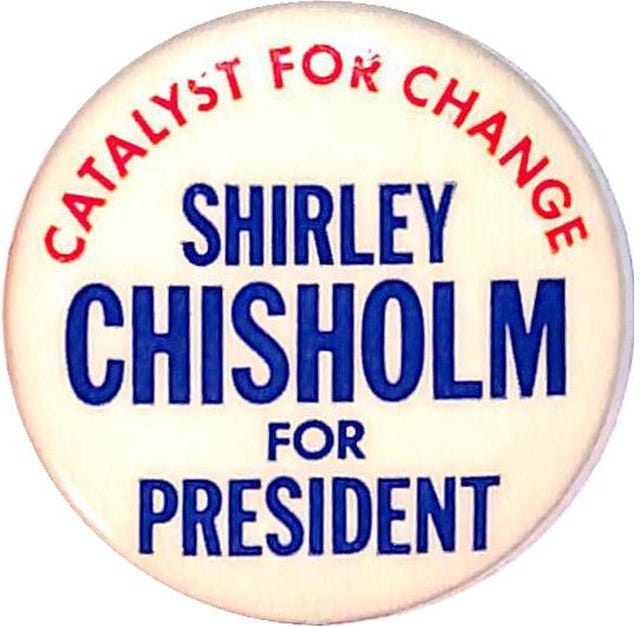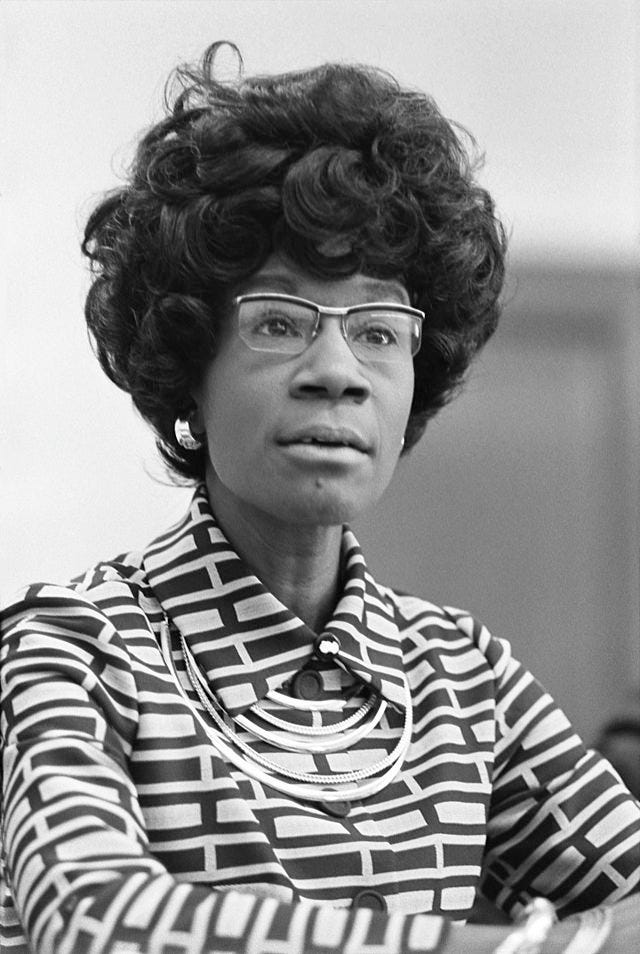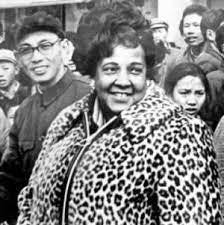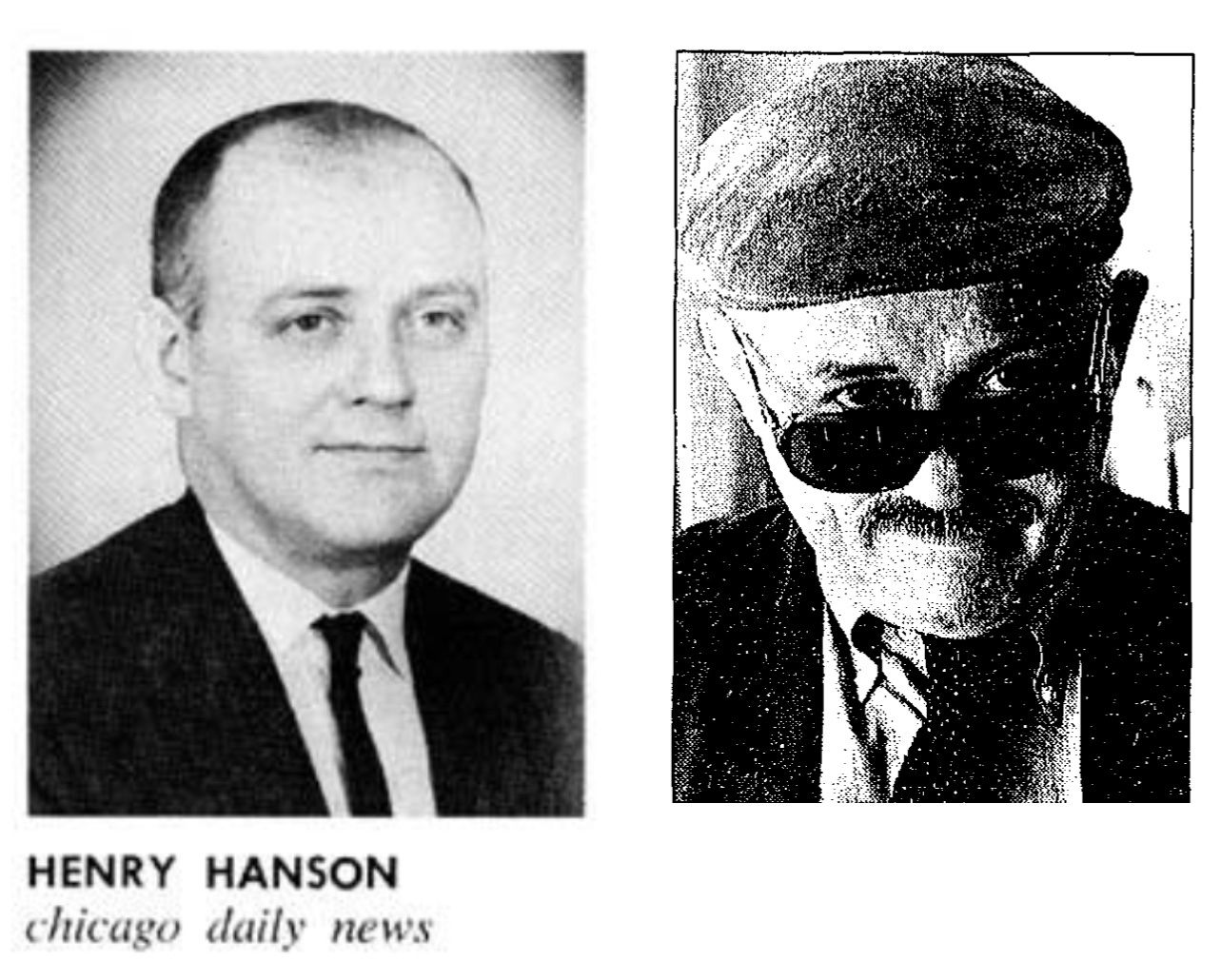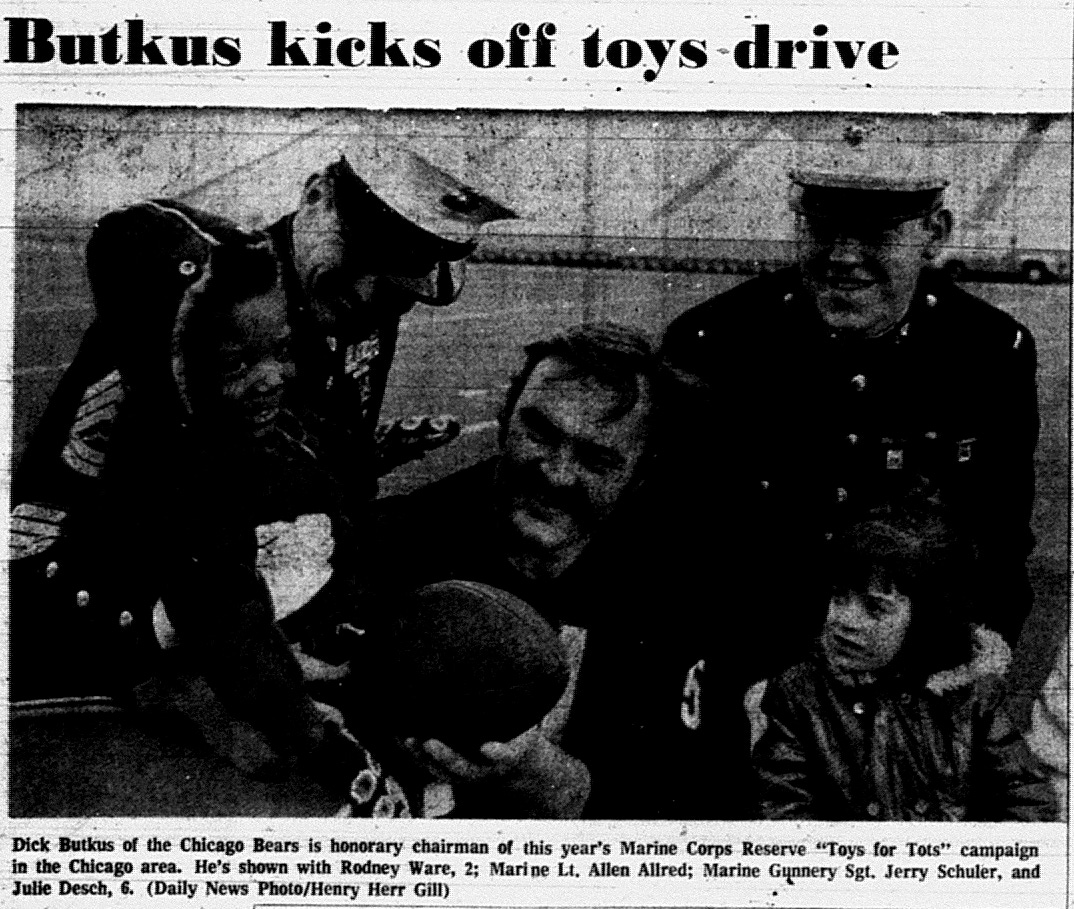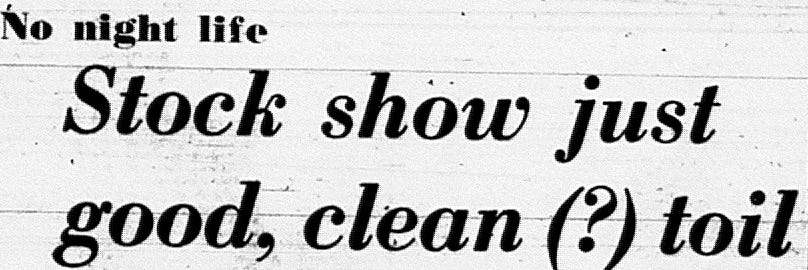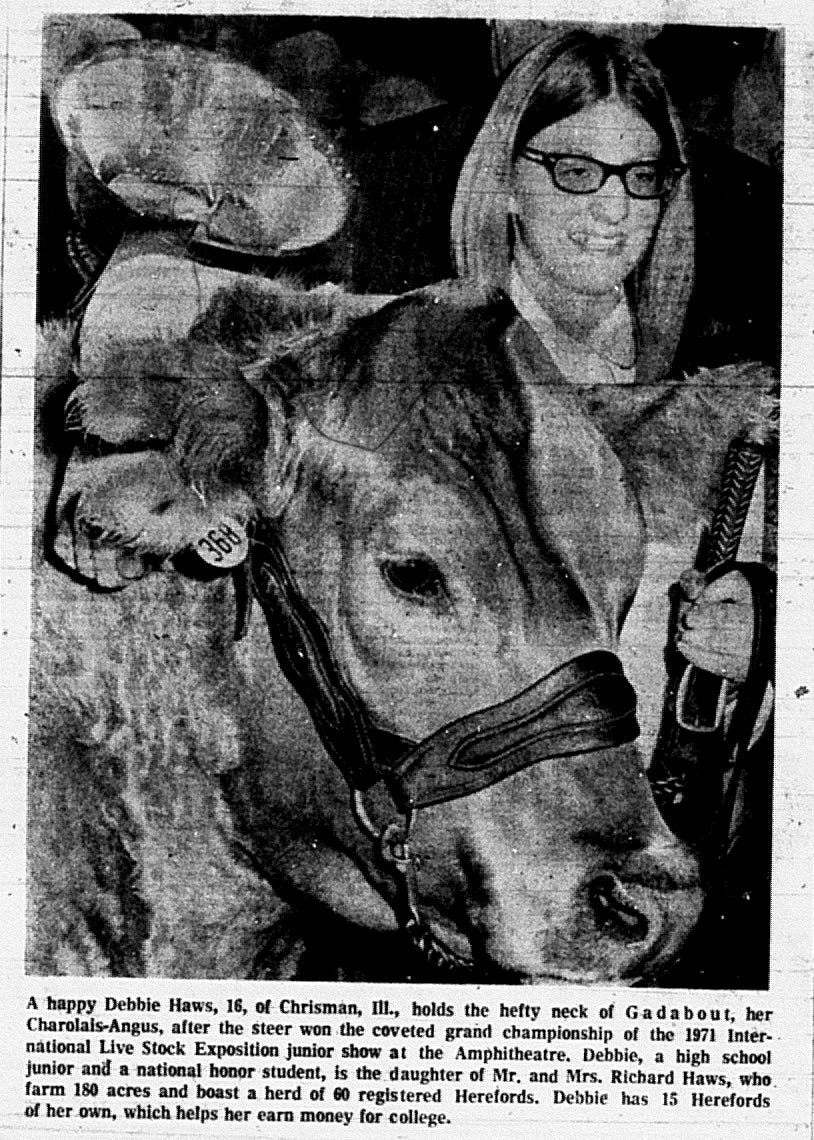THIS CRAZY DAY IN 1972: Hijackers, more hijackers, and lots of arson
November 22-28, 1971
To access all site contents, click HERE.
Why do we run this separate item peeking into newspapers from 1972? Because 1972 was part of the ancient times when everybody read a paper. Everybody, everybody, everybody. Even kids. So Steve Bertolucci, the 10-year-old hero of the novel serialized at this Substack, read the paper too—sometimes just to have something to do. These are some of the stories he read. If you’d like, keep up with the 1972 papers every day on Twitter, @RoselandChi1972.
November 22, 1971
Chicago Daily Defender: Inside story of squabble in Black Caucus
By Ethel L. Payne
The Defender gives more details on the dust-up last Friday involving U.S. Rep. Shirley Chisholm--written by the reporter known as "First Lady of the Black Press."
Chisholm, who’s running for president and is Black, was not invited to speak or help organize the Congressional Black Caucus conference focused on increasing Black political power and the upcoming 1972 presidential election.
Chisholm ended up speaking anyway at the opening session after an audience member asked why Chisholm wasn’t included in a panel on “The Development of Black Political Power in the Seventies.” Then Chisholm let ‘em have it:
“Taking the podium, she demanded to know why it was possible that the ‘Highest black elected woman in this country who is also the Democratic National Committeewoman from the state of New York could be ignored?’ She added, ‘You better wake up!’”
Payne writes that “some of the daily press” “blew it up far beyond its natural proportions,” though Payne’s report includes much more detail on the dissension at the conference than the Associated Press account run by the Sun-Times on Saturday, including:
Payne reports that Chisholm’s reprimand “brought on a chain reaction of bitter expressions from both sides that overshadowed the really significant accomplishments of the conference.” Chisholm told reporters later that “male chauvinism, both black and white, has forced her to become a loner.”
Payne also reported that "'the Chisholm Affair', as it was dubbed" was debated for 4 1/2 “stormy hours in a closed session that included Mrs. Martin Luther King”. After California Rep. Ronald Dellums defended Chisholm, Chisholm said His male ego is not threatened.”
Ethel L. Payne is an especially distinguished Chicago reporter, called “First Lady of the Black Press.” She was the first African American woman in the White House press corps, and the first on national TV with CBS. She was born and raised in Englewood on the great South Side, and worked for the Defender 1951-1978.
Sadly, Block Club Chicago reported just last month that current Defender contributor Tammy Gibson discovered Payne is buried in Mount Glenwood Cemetery in Glenwood in an unmarked grave. Payne has no living relatives, so Gibson started a GoFundMe to provide a stone. Read about Payne on Block Club Chicago and at the National Women’s History Museum.
November 22, 1971
Chicago Daily News: Fire hits Hancock!
Hunt for arsonist
By Edward J. Rooney and Haslan Graeger
Smoke poured out of the John Hancock’s 52nd floor as the fourth fire in three days broke out in a storage room, even as arson investigators on different floors were checking out the earlier blazes from Friday and Saturday.
“Puffs of white smoke could be seen pouring from the west side of the huge building, the world’s third tallest,” writes the Daily News—which could cover Monday’s events Monday because it was an evening paper.
“While firemen put on smoke masks and braved intense heat and smoke on the 52ndfloor, about 50 customers continued eating lunch in the Ninety-Fifth, the posh upper-floor restaurant.”
“Scores of residents fled” the upper floors, but business went on as usual further down, such as the Bonwit Teller store at ground level. Incredibly, the J. Walter Thompson ad firm, taking up the 25th-28th floors, kept their employees working the whole time.
Even more incredibly, the fire department let the Daily News reporters ON THE 52ND FLOOR WHILE THEY FOUGHT THE FIRE. “Firemen shouted at each other and the smoke was so dense at one point that it was impossible to see the other end of the corridor.”
“Ankle deep water poured through the red corridor carpets and seeped down to some lower floors.” Two firemen were injured, and Fire Commissioner Quinn personally led the 50 firemen battling the blaze, according to the News. Maybe that’s why they let the reporters into the fire itself, to make sure Quinn got good coverage.
November 22, 1971
Chicago Daily News, Pt 1: Bears shrug off worst day
By Ray Sons
Ray Sons calls Sunday’s Bears match against the Lions yesterday Bobby Douglass’ “Waterloo.” The Bears lost 28-3. The Lions sacked Douglass eight times, stole four passes and “held him to six net yards passing,” writes Sons.
Sons says Douglass took it philosophically, the fans did not. You’re not going to have things go your way all the time,” Bobby said with a shrug.
“We want (Kent) Nix!” screamed “many a loud-mouthed soul among the 55,049” at Soldier Field.
It didn’t help that receiver Dick Gordon was out due to his strained left knee. Plus, “A 20-mile wind whistled out of the north and made even (Bobby Douglass’) usual bullet passes wobble.”
A great line that could have been Sons’ closer: “After the Lions had devoured everybody in sight, there was some disagreement among the survivors as to who had unlocked the door of their cage.”
His actual closer: “I think we got everything bad out in one game,” said coach Jim Dooley.
In fact, the Daily News sports section declines to name its traditional “Bear of the week,” instead running this statement: “We’ll declare a vacancy in our ‘Bear of the Week’ selection this time. If there was a standout performance by a Bear in Sunday’s debacle, we missed it.”
November 22 , 1971
Chicago Daily News Pt 2: Buffone: I didn’t see any canaries out there
By Jack Schnedler
The Lions mauled the Bears in a humiliating 28-3 game yesterday. In the worst play, the Bears looked like they were playing a game of Statue Maker. Does anybody remember that game, by the way?
It was the 2nd quarter. The Bears heard a referee’s whistle, thought Lion halfback Altie Taylor had stepped out of bounds while carrying the ball, and they all instantly stopped playing.
Taylor did not hear a whistle and ran 19 yards for a touchdown.
Schnedler acknowledges the lopsided score but says this play “took the Bears out” of the game. Afterward, the refs denied blowing any whistle.
At the moment when the whistle did or did not blow, “It appeared that at least seven Bears had a good shot at tackling (Altie Taylor) or forcing him out of bounds, including Joe Taylor, Dick Butkus, Ross Brupbacher, Willie Holman, Jerry Moore, Ed O’Bradovich and Tony McGee.”

“They could easily have pushed me out of bounds,” Schnedler quotes Altie Taylor. “I saw so many Bear uniforms I’m not sure who had the best shot at me…I could see everybody had stopped as I went past.”
Bear Jerry Moore says he stopped rather than tackling Taylor when he heard the whistle, because “The play’s over. You can get a roughness penalty for tackling a guy after the whistle.”
Doug Buffone said it was either a referee whistle or a canary, “and I didn’t see any canaries out there.”
Altie Taylor celebrated along with the Lions regardless: “The officials are always right. That’s a fact, isn’t it?”
November 23, 1971
Chicago Daily News: ‘Sorry,’ youth says of Hancock fires
By Edmund J. Rooney and Diane Monk
Yesterday smoked poured out of the 52nd floor of the John Hancock. Firefighters (and two Daily News reporters) couldn’t see through the dense smoke and sloshed through ankle-deep water.
Today 18-year-old Yugoslavian immigrant Joseph Budakovic appeared in “North Boys Court” after confessing to setting four fires in Hancock storage rooms in the last few days. Budakovic claimed his immigrant parents forced him to drop out of Senn High School after one year and get a job at 16—as janitor at the Hancock.
Police report Budakovic said he just wanted to go back to school. His mother said through an interpreter that she didn’t want him there because she didn’t like “the company he was keeping there.”
November 23, 1971
Chicago Daily News: ‘Try living on $50,000 a year’
Reader H.J. Oettinger of Chicago writes the Daily News: “With all the financial woes concerning welfare and education, perhaps the only way to preserve this system is to revive F.D.R.’s wartime idea of a $25,000 limit on incomes.”
“Considering inflation, let’s make it $50,000 a year,” writes Oettinger. “Anyone should be able to live on a thousand a week, I think, though I’ve never had the opportunity to try.” And yes it’s true, in 1942 FDR proposed capping net income at $25K, which technically would have been worth about $62K in 1971 and $425K today—so it was a generous amount.
Also, several letters denounced Vice President Spiro Agnew’s remarks at a Chicago appearance—lampooned by Mike Royko last week—in which Agnew called welfare recipients “deadbeats.” Lois A. Lestina of Northlake writes that her husband has cancer, and though she has worked too, all their money is gone. They have 7 children, the youngest seven months old.
“How can we support ourselves after our insurance runs out?” she asks. “We will have to apply for welfare…I am white, but I sympathize with the blacks. They haven’t had the opportunities I have had. How can you expect people to support themselves when most jobs do not pay a living wage?”
Now she addresses Agnew directly:
“Perhaps a bit of hardship would do you and Gov. Ogilvie some good. To stand there and make jokes about people who can’t fight back makes me sick.”
November 24, 1971
Chicago Daily Defender Editorial: Spirit of Thanksgiving
“Tomorrow is Thanksgiving…Though the world is not yet safe for impartial fulfillment of democratic principles, we in America have much to be grateful. True, there is poverty yet in the land of plenty, true there are rumblings of racial discontent and social unrest, there is no famine here as in some parts of the old world where thousands are dying from hunger, disease and lack of shelter.
Thanksgiving is the one day in which the rich and the poor alike partake of the same kind of food and in a similar measure of abundance that would astonish the outside world…It is a day on which to count our blessings.”
November 24, 1971
Chicago Daily Defender: Prison farm plea
The Defender runs two letters today from the London, Ohio prison. In the order the letters ran there:
“Dear Editor: I am a white man and read your paper when I can get it. I would like to ask you to help us at London Prison Farm, both the colored and the white inmates. We want the outside to know what really is going on here. Both races, colored and white, have formed a 28-man committee through which to air our grievances.”
“….People do not know what goes on inside unless the administration tells them, and then it only tells them what it wants them to know. Our main grievance is: We want to be treated equally. The administration tries to pit black against white by pretending that we are treated better. We are all mistreated, black and white alike. We are all in this together, trying to get the administration to listen to our grievances. All we ask is to be treated like men. We want better food, better living conditions, and most of all schooling. Please publish this letter. –Donald Dean Martin”
And: “Dear Editor: Please inform as many persons as possible that convicts at the London, Ohio Correctional Institution are engaged in peaceful dissent over the archaic and inhumane conditions under which we as inmates are forced to live. I, as the vice chairman of the Inmate Grievance Council, would appreciate it if the Defender would print this short letter.”
“It is imperative that the many persons who read your newspaper know what is happening here…We are acting as honorable and decent human beings, and we must be treated as such. At this time I want to personally thank those persons who have responded to our plight by writing letters to the superintendent of the institution and for giving us moral support in our struggle…Mrs. Margaret T. G. Burroughs and Mr. Eugene P. R. Feldman, director and staff member of the Du Sable Museum of African-American History, and the museum staff, whose letters were read to the committee at our meeting and were received with heartfelt warmth and deep appreciation.”
“We are grateful, also, to the Chicago Daily Defender for providing this means to get our message across. We, the members of the Inmate Grievance Committee, salute you. –Thomas J. Smith Jr. P.S. I am a subscriber and have been for years, and a former Defender newsboy.”
November 25, 1971
Daily News: Jet hijacker vanishes!
Did he jump with $200,000?
UPI
Regular readers of this space know that planes are getting hijacked right and left in 1971. Hijacked planes don’t even always make it onto the front page—sometimes there are too many in one day.
But today’s hijacking gets front page treatment, and when you read the hijacker’s name, you’ll know why.
“A middle-age man hijacked a jetliner with 43 persons aboard Wednesday night, collected $200,000 ransom at Seattle and disappeared” after the plane landed in Reno.
“The man, tentatively identified by the FBI as a D.B. Cooper, either parachuted into the remote Nevada wilderness…or ran from the open back door…after the plane touched down, police said.”
D.B. Cooper showed an alleged bomb to hijack a Northwest Airlines 727 flying Portland to Seattle. He picked up the $200k and four parachutes in Seattle and let off most of the passengers. Reno was supposed to be a fueling stop on the way to Mexico—but then Cooper disappeared.
“The pilot, Capt. William Scott, said the hijacker had locked a door between the cabin and the back compartment” so he didn’t know if Cooper parachuted or not. Two Air Force planes shadowing the jet didn’t see anyone jump, though only 3 parachutes were left on the plane.
The plane personnel cooperated with D.B. Cooper so smoothly, the Northwest passengers who debarked in Seattle didn’t know they’d been hijacked—even though the plane circled for two hours before landing as Northwest scrambled to get the $200k together.
Everybody said the hijacker was very relaxed.
November 25, 1971
Chicago Daily News editorial: Stock show comes to town
The International Live Stock Exposition, held of course at the Ampitheatre, used to be the biggest show in town—starting in 1900. And you probably never heard of it.
The News devotes an entire editorial to the Live Stock show, saying “the welcome mat is out for the thousands of visitors it brings to Chicago.”
We’re not really hog butcher for the world anymore, but farming is big business now and Chicago is still the place to be.
“Sleek cattle, hogs and sheep—more than 3,500 of them from 35 states and Canada—are here for judging during the show, which is the top event of its kind in the livestock and meat industry. By the time the last blue ribbon has been pinned, the last rodeo performed…the show may have drawn as many as 300,000 people.”
November 26, 1971
Chicago Daily News: Winkler’s back, says slum foe
By Jay McMullen
“Jack Winkler, once branded one of the city’s 20 most notorious slumlords, apparently is back in business under a phony name,” writes reporter Jay McMullen, future husband of future Mayor Jane Byrne.
The Daily News ran a series on slumlords in 1953 naming Winkler among the top 20 worst city slumlords, leading to an at least brief crackdown. Now, Lake View Citizen’s Council has rallied to clean up 841-49 W. Cornelia, owned by a “Arthur Butler.”
“The Cornelia Av. building bears evidence of the Winkler touch,” writes McMullen—it’s had 3 fires in 2 months. City assistant corporation counsel Tim O’Hara says owner “Arthur Butler” is almost certainly the notorious slumlord Jack Winkler.
I haven’t researched the bldg., but judging from this picture on Google Streetview, the current residents of 841-49 W. Cornelia might be surprised to hear the place used to be an infamous slum. The neighborhood itself, of course, is highly desirable these days.
November 26, 1971
Chicago Daily News: Today’s Chuckle
Another installment in the always awful, often sexist joke the Daily Newsfrequently uses as filler on the front page.
FYR (For Younger Readers): This joke is based on the then-stereotypical scenario of a male boss sexually harassing a female subordinate by chasing her around a desk, trying to force a kiss or more. The scenario was considered light-hearted and harmless.
November 26, 1971
Chicago Daily News: Bulldogger at Stock Show rodeo
Chicago cowboy busy!
By Henry Hanson
The News continues what will be daily stories about the 72nd International Live Stock Exposition at the Ampitheatre, Thanksgiving-Dec. 1. It used to be the biggest show in town—starting in 1900. You probably never heard of it, and it only has a few more years to live, though nobody knows that yet.
The Livestock show was a capitalist, commercialized county fair gone berserk, covered in our upcoming “Chapter 10: Jack Cassero.” Jack is a good friend of Steve’s, the hero of “Roseland, Chicago: 1972.” Jack dreamed of growing up to work as a cowboy in the Stockyards. The closest he got was one visit to the Livestock Show in 1966, because Steve’s Nonno worked for Magikist and got free tickets from work. The Livestock show was the closest most Chicagoans got to the Wild West or nature, so that's fitting.
Today Hanson reports on two Chicago “bulldoggers.” “Not all lean, leathery cowboys performing this week at the World’s Championship Rodeo…ride out of the Wild West,” he writes. Mike Green is from 4341 S. Emerald, and James Conkey is from 6343 S. Western.
Green is an electrical lineman, and Conkey is an insurance salesman. Weekends, they bulldog. Green says he got started “right here at the old Union Stock Yards” and it beats playing cards.
Steer wrestling is when “A man leaps from a galloping horse onto the horns of a steer running at full tilt, then stops the steer and tries to throw it to the ground.” WHAT?
Bull riding is worse, writes Hanson. But a Stock Show bullrider who has suffered 3 broken legs, 2 broken arms and many broken ribs and wrists says it’s “not a bad job. As long as you can survive. I can make between $5,000 and $6,00 a year at it. That’s enough to keep you in business.”
Henry Hanson worked first for the legendary City News Bureau, then for the Daily News from 1955-1978 when the paper folded. Next Hanson became a fixture at Chicago Magazine, writing its “Upfront” column for years. He died in 1995.
In Hanson’s Tribune obituary, reporter Kenan Heise quoted long-time Chicago Magazine editor Richard Babcock in a 1993 piece: “A gentle, playful man always located under a well-worn, flat cap, Hanson has been a Chicago journalist for more than 40 years, stretching back to the days when Martin Kennelly was mayor and Henrici’s on State Street was the restaurant of choice. He knows everyone. To walk the streets with Hanson, or worse, to attend a public event at his side, is to be swarmed with well-wishers—all reaching past you.”
For people who were adults before the ‘60s and after, it’s often surprising to see the transformation that occurred over those years. Below left, here’s buttoned-down reporter Henry Hanson in the 1967-68 Illinois Blue Book courtesy of the Illinois State Library; right, Henry Hanson transformed into cool flat-cap-wearing mustachioed Chicago Magazine columnist.
November 27-28, 1971
Chicago Daily News: Butkus kicks off toys drive
“Dick Butkus of the Chicago Bears is honorary chairman of this year’s Marine Corps Reserve “Toys for Tots” campaign in the Chicago area.” Note this is the longer-haired, mustached Butkus of the ‘70s.
November 27-28, 1971
Chicago Daily News: ‘Gold rush’ is on for chutist’s $200,000
UPI
“Woodland, Wash (UPI)—A parade of autos, pickup trucks and motorcycles wound through the rolling foothills of the Cascade Mountains this weekend, carrying people seeking a fortune that might never be found.”
They’re hoping to find the crumpled dead body of “D.B. Cooper,” the hijacker who may have leapt from a Northwest Airlines 727 somewhere between Seattle and Reno on Thanksgiving Eve. And a bag of $200,000 next to him.
The UPI reporter picks three college girls home for Thanksgiving, gassing up their car to “have a look around.”
“You start thinking about it,” says one girl who goes by “Anita.” “And you realize maybe he didn’t live through the fall and there’s $200,000 sitting all alone in the woods.”
November 27- 28, 1971
Chicago Daily News: Chicago-Bound jet hijacked
By Arthur Gorlick
As we mentioned on the first day of the D.B. Cooper story, regular readers of this space know that planes are getting hijacked right and left in 1971. Today is one of those days when there are so many hijacked planes, what’s a newspaper to do?
The News would like to give the whole day’s paper to the aftermath of the D.B. Cooper hijacking, but a newly hijacked plane had been bound for Chicago.
So the News splits the difference by giving the larger headline to the current hijacking that might include Chicagoans, then jumping the story to an inside page after a few paragraphs, so D.B. Cooper still gets most of the front page.
The Chicago-bound hijacked plane was from TWA. At first it was erroneously reported that Dustin Hoffman was on it. You detect some disappointment that it wasn’t true.
The TWA hijackers took the now hackneyed flight to Cuba route rather than parachuting like D.B. Cooper—but they chose a far more interesting way to start the crime:
“Three men, two of them armed with pistols and the third wielding a knife, leaped from a tow truck that had pulled alongside the boarding ramp of the Boeing 727 jet” as it waited to take off at the Albuquerque, New Mexico airport.
The hijackers had hijacked the tow truck driver and forced him to drive them to the plane.
“One of the hijackers ran aboard the plane and placed a gun against the head of a stewardess and ordered her to close the door.”
A passenger later said “they came bursting in with the last passenger”. Police cars surrounded the plane, but the pilot radioed permission to take off.
The plane landed in Tampa to refuel, letting off the passengers. The crew was forced to accompany the hijackers to Havana. The three hijackers were wanted for murdering a New Mexico state policeman during a routine traffic stop.
“One of the passengers said the hijackers, all blacks, ‘gave the “soul handshake” to nearby hippie-type passengers’ once the plane was airborne.”
Are you wondering what happened when they got to Cuba?
The story doesn't bother to say. That's because hijacked flights to Cuba all end the same boring way, and the newspaper assumes you already know that because, again, this happens all the time.
But I'll remind you: When hijackers get to Cuba, a Cuban official or two will meet the them as they debark and lead them off to start a new life in Cuba. The hijackers imagine a life of luxury, but they'll just be ordinary Cubans. Which isn't that great.
Cuban officials are used to refueling hijacked American planes. It’s all very rote. The U.S. crew turns around and heads back home. The end. Nothing to see here, so it's not news and not in the newspaper anymore.
November 27-28, 1971
Chicago Daily News: No night life; Stock show just good, clean (?) toil
By Henry Hanson
Henry Hanson continues his Stock Show beat, but harkens back to the crazy 1968 Democratic convention also held in the Ampitheatre: “Abbie Hoffman and the Yippies would be thunderstruck to see who has taken over Chicago’s International Ampitheatre. Straight-arrow farm boys who sleep in the straw with their cattle—that’s who.”
Hanson interviews various people caring for their animals throughout the show. “There’s no night life in this. Most of us work 14 hours a day or more,” says Harold Arendt of South Dakota.
Si Smith of Montana agrees as he watches his Shorthorn bull. “’My son, Coby, named him ‘Hey Jude’ after the song by the Beatles. I sure hope he wins. And it’s sure been enjoyable talking to you,’ he told a reporter.” I’m assuming Si Smith looks like Gary Cooper or Jimmy Stewart, since he sounds straight out of a Frank Capra movie—and I would never mean that in anything but a good way.
November 27-28, 1971
Chicago Daily News: Debbie Haws’ steer wins grand championship
“A happy Debbie Haws, 16, of Chrisman, Ill., holds the hefty neck of Gadabout, her Charolals-Angus, after the steer won the coveted grand championship of the 1971 International Live Stock Exposition junior show at the Ampitheatre.”
“Debbie, a high school junior and a national honor student, is the daughter of Mr. and Mrs. Richard Haws, who farm 180 acres and boast a herd of 60 registered Herefords. Debbie has 15 Herefords of her own, which helps her earn money for college.”
Do you dig spending some time in 1972? If you came to THIS CRAZY DAY IN 1972 from social media, you may not know it’s part of the book being serialized here, one chapter per month: “Roseland, Chicago: 1972.” It’s the story of Steve Bertolucci, 10-year-old Roselander in 1972, and what becomes of him. Check it out here.





